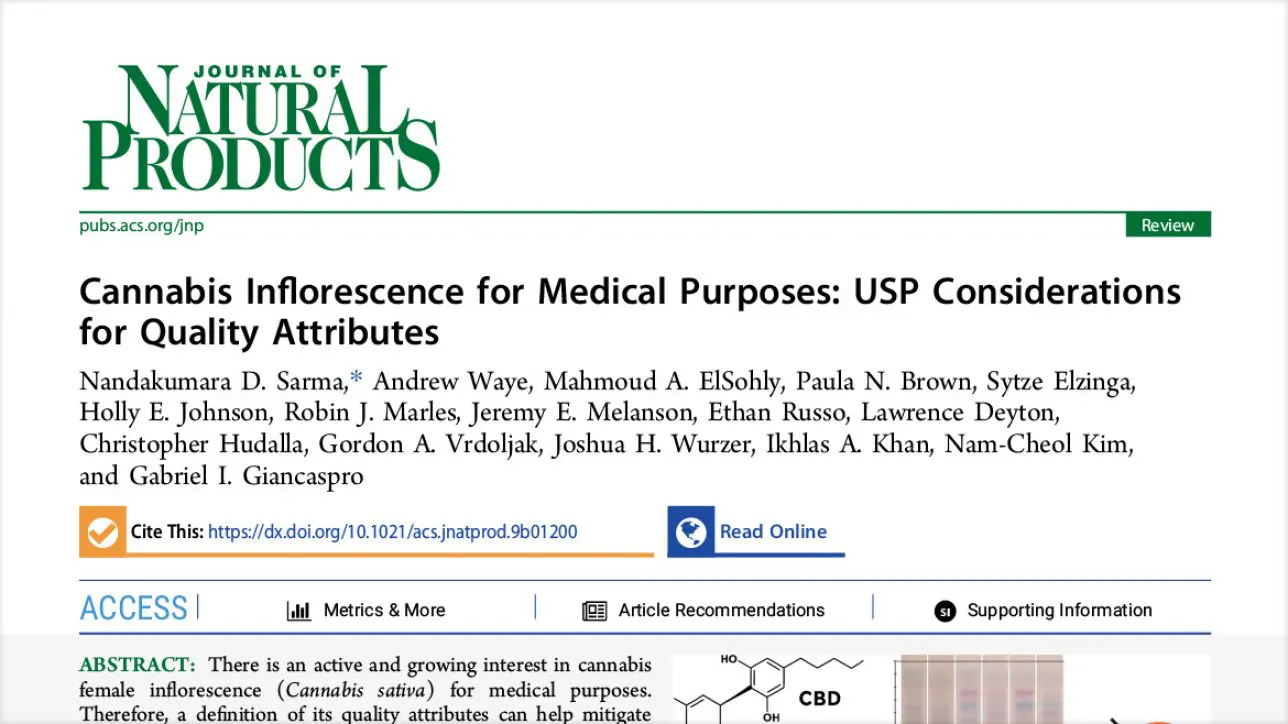By Josh Wurzer, SC Labs Chief Operating Officer and Cofounder
The USP Cannabis Expert Panel is working to develop quality and safety standards for the cannabis industry. These guidelines are essential for public health protection and will help facilitate scientific research on cannabis safety and therapeutic potential.
For three years, I’ve served as an independent volunteer on the United States Pharmacopeia (USP) Cannabis Expert Panel, offering my expertise and historical data gleaned from 10 years of experience in cannabis testing. As a cannabis laboratory professional, I believe that it’s imperative that the industry develop consistent standards and specifications to ensure the safety and efficacy of products. In my role with SC Labs, I work with cannabis companies daily who are committed to the safety and efficacy of their products.
As we move closer to federal legalization, I believe these standards will lead a more thoughtful conversation.
Recently, the USP published the panel’s work on “Cannabis Inflorescence for Medical Purposes: USP Considerations for Quality Attributes.” The paper establishes the need for quality control and public quality standards and begins the conversation on differentiating between cannabis chemotypes.
Quality Assurance Testing
Since cannabis is still not legal at the federal level, there are no national standards around quality, testing, efficacy, and consumer protection. One of the Cannabis Expert Panel’s initial tasks has been to determine the ideal parameters for cannabis quality assurance testing. This is a critical first step in helping to steer policymakers as they develop the regulatory framework for federal legalization.
The expert panel unanimously agreed that establishing cannabis chemotype classifications should be the basis for creating these standards. The panel cited the work of Etienne de Meijer and his research on cannabis genetics that outlines cannabis chemotypes based on their predominant cannabinoid content: Type I being considered THC dominant, type II containing both THC and CBD, and Type III being CBD dominant1. Having a standardized chemotype classification system will in turn aid medical practitioners in finding varieties that work well for patients’ conditions.
Product Safety Testing
The document also addresses product safety attributes and specifies limits for heavy metals, pesticide residues, microbial contaminants, residual solvents, and water activity. The discussion surrounding pesticide residues is particularly of note because it highlights a difficult reality that regulators currently face. At present, there is little to no safety data on pesticide residues when they are combusted and inhaled making it very challenging for experts to make any recommendations on action limits for inhaled cannabis products2.
The microbial testing considerations in the document establish thresholds for various total count tests which are non-specific tests surveying broader classes of microorganisms (i.e. total yeast and mold). As noted in the article, “When seen in high quantities, these can serve as indicators for potentially more harmful microbes however, they do not discern between what is harmful and what is not”. The authors note that Aspergillus is a primary pathogen of concern especially for immunocompromised patients using inhaled cannabis products 3,4. Currently, only a handful of states test for four species of Aspergillus known to cause lung infections in cannabis users.
We certainly have more work to do in researching and refining these quality and safety standards; protecting consumers is at the core of our work. As we move closer to federal legalization, I believe these standards will lead a more thoughtful conversation.
- De meijer EP, Bagatta M, Carboni A, et al. The inheritance of chemical phenotype in Cannabis sativa L. Genetics. 2003;163(1):335-46.
- Seltenrich N. Into the Weeds: Regulating Pesticides in Cannabis. Environ Health Perspect. 2019;127(4):42001.
- Ruchlemer R, Amit-Kohn M, Raveh D, Hanus L. Inhaled medicinal cannabis and the immunocompromised patient. Supportive care in cancer : official journal of the Multinational Association of Supportive Care in Cancer. 2015 Mar;23(3):819-22. PubMed PMID: 25216851.
- Gargani Y, Bishop P, Denning DW. Too many mouldy joints – marijuana and chronic pulmonary aspergillosis. Mediterranean journal of hematology and infectious diseases. 2011;3(1):e2011005. PubMed PMID: 21625309. Pubmed Central PMCID: 3103256.

